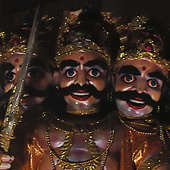Design Resource
Shigmotsav in Goa
Special Festival to Foster The Feelings of Love
by
Various festivals are celebrated in India throughout the year. Every season in India is welcomed by a special festival in order to express gratitude and to foster the feelings, of love for nature. ‘Shigmotsav’ is one of them is popularly known as Shigmo. In Goa, Shigmotsav is celebrated by common people. Bidding adieu to the winters, Shigmotsav is celebrated on a full moon day during the month of March (Falgun), which is also the last month of the Hindu calendar. It is usually celebrated fourteen days before the festival of colours, Holi.
The unique aspect of Goa is that all these festivals are celebrated with much pomp and zest. This festival has been celebrated in Goa since 9179. This celebration clearly indicates its association with the local deities and the wealth of nature. The Hindu Goan ethnicity begins the celebration with a collective prayer and naman, where they kneel together making a vow, shunning intoxicants and non-vegetarian food – from the ninth moon day up to the full moon day. On the eleventh Moon day until the fifteenth moon day villagers assemble in their multi-coloured attires setting the mood for festivity with column-like red spotted flags – ‘Dhwaja’, beating the drums and blowing flutes together at the village temples, and performing dances within the temple courtyards while singing various folk songs. The celebration starts in the afternoon and goes on until the moon shines high in the sky.
In Goa, Shigmotsav is celebrated across 5 days, with the gaiety of one-day carnivals that takes place on the main road of Goa, Panjim, Mapusa, Vasco & Margao on each day, they become an eye-pleasing treat for tourists travelling during these months.







